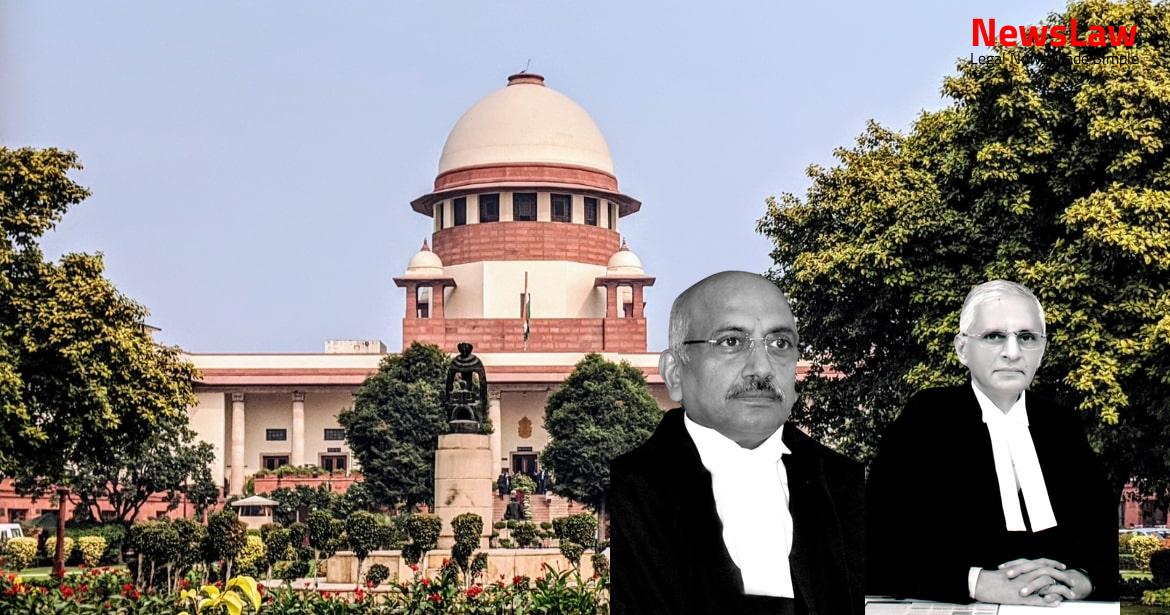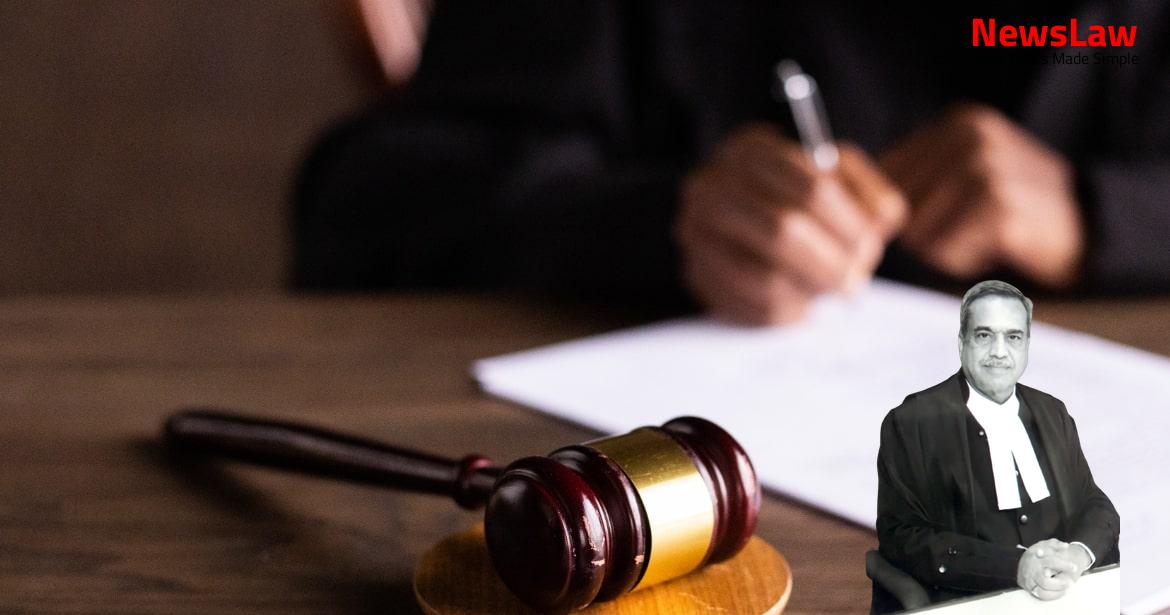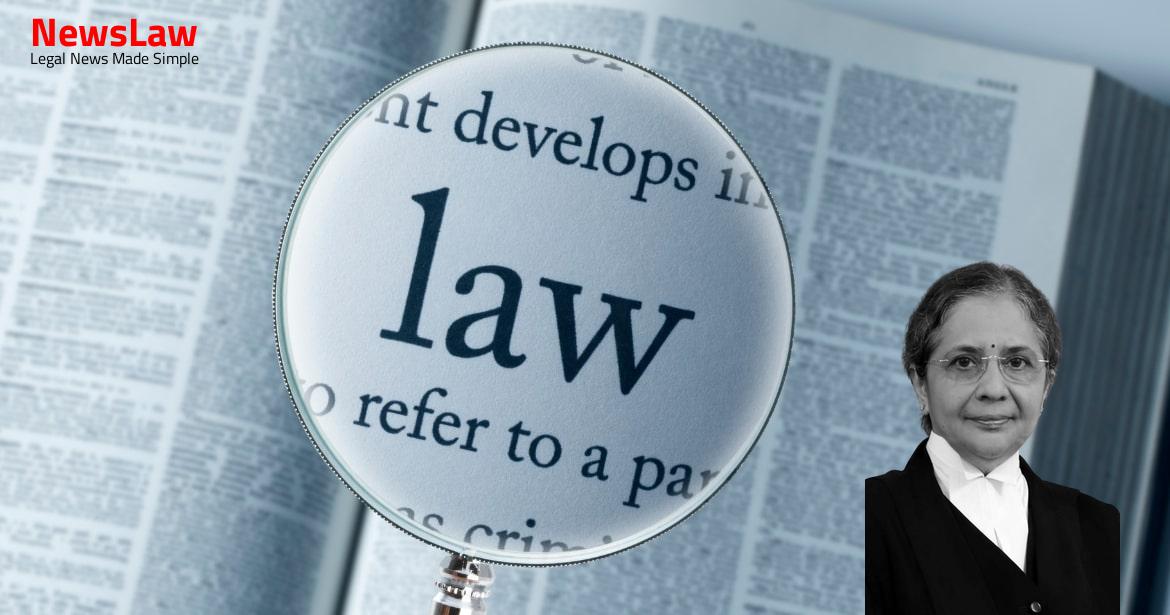This case delves into the detailed legal analysis conducted by the Court regarding State policies on prisoner remission. Emphasizing the importance of understanding the statutory framework governing remission, the Court’s examination sheds light on the complexities involved in determining premature release criteria for prisoners. The decision reached by the Court carries significant implications for future remission considerations and underscores the need for clarity and consistency in policy implementation.
Facts
- The State and the writ petitioner are aggrieved by an order of the High Court directing the State to consider drafting a fresh policy for granting remission to prisoners.
- Policies dating back to 1988, 1991, 2000, and 2002 were issued for considering premature release cases on an individual basis.
- The State was asked to explore the feasibility of having a retrospective operation policy without leading to discrimination.
- The State could exercise powers under Sections 432 and 433 of the Code of Criminal Procedure, 1973, with restrictions imposed under Section 433-A, until a decision was reached.
- Various policies circulated by the State Government, starting from 1987, were mentioned, particularly focusing on the consideration of premature release for convicts with life imprisonment sentences.
- Policy dated 13.8.2008 did not anticipate individual cases needing to be presented to the Hon’ble Governor.
Also Read: Critical Analysis of Circumstantial Evidence in Arson Case
Analysis
- Policies issued post-1974 are statutory in nature under Section 432 of the Code
- The policy dated 12.4.2002 applies to prisoners who have completed 14 years of actual imprisonment
- Remission consideration varies for prisoners convicted under Section 302 IPC
- The policy of premature release is a rule of procedure subordinate to the Constitution
- Governor’s power under Article 161 of the Constitution for remitting sentences
- The policy dated 13.8.2008 is a statutory policy superseding earlier policies
- Prison Act, 1894 -> Section 432(5) of the Code as the source of power for policies
- Differences in applying policies based on actual imprisonment duration
- Governor’s discretion not restricted by actual imprisonment duration for granting pardons
- Policy dated 12.4.2002 in supersession of prior policies
- Policy provisions for cases presented to the Governor under Article 161 of the Constitution
- Policy under statute does not override Governor’s discretionary powers under Article 161
- Power to issue remissions post-1974 traceable to Section 432 of the Code
- Comparison of policies dated 4.2.1993 and 12.4.2002
- Clause 2(c) of the policy dated 13.8.2008 addresses convicts imprisoned for life under IPC
- Succession and operation of policies issued at different times
- Exercise of powers must be referrable to a jurisdiction that confers validity.
- Policy instructions are statutory, framed under the Prisons Act or Section 432 of the Code.
- Article 161 powers can be exercised by State Governments, not Governors independently.
- General orders must be clear to identify the group of cases under consideration.
- Remission under Article 161 overrides Section 433-A if the constitutional power is chosen.
- Life convicts prior to 18.12.1978 are not under the purview of Section 433-A.
- Remission rules override Section 433-A under Articles 72/161 of the Constitution.
- Minimum 14 years’ imprisonment without remission is required for certain convictions.
- Governor’s power to commute or pardon is independent of restrictions like Section 433-A.
- Policy prevalent at the time of conviction is crucial for premature release consideration.
- Governor’s approval may be sought for releases under Article 161, as a courtesy.
- Policy applicable for remission should be as per the prevalent policy at the time of conviction.
- Section 433-A of the Code restricts the right of the appropriate Government to suspend the sentence of imprisonment for life for certain offences.
- A person convicted for an offence with death as one of the punishments provided by law must serve at least 14 years of imprisonment before being released from prison.
- The power to release a prisoner after 14 years of actual imprisonment lies with the State Government.
- Distinction between power of remission by State Government and power of premature release by Hon’ble Governor based on actual imprisonment period of prisoner
- State Government to exercise power of remission after 14 years of actual imprisonment under Section 433-A of the Code
- Hon’ble Governor can exercise power of premature release if imprisonment is less than 14 years, on aid and advice of State Government
- Directions issued by High Court deemed unsustainable as policies must consider period of imprisonment undergone by prisoner
Also Read: Analysis of Commencement Date in Gratuity Act Amendment Case
Decision
- The State Government can consider the prisoner for premature release after less than 14 years of imprisonment under Article 161 of the Constitution.
- The directions issued by the Single Bench are set aside.
- Premature release can be considered only after the prisoner completes 14 years of actual imprisonment as per the State Government policy dated 13.8.2008.
- The prisoner has completed 12 years and 25 days of imprisonment as of 6.7.2021.
Also Read: Interpretation of Will and Hindu Succession Act: Legal Analysis
Case Title: THE STATE OF HARYANA Vs. RAJ KUMAR @ BITTU (2021 INSC 377)
Case Number: Crl.A. No.-000721-000721 / 2021



